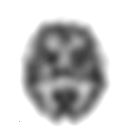
Photo from wikipedia
Objective Molecular imaging of nigrostriatal dopamine transporters (DAT) and sympathetic cardiac innervation with single-photon emission computed tomography (SPECT) are useful tools for differentiating idiopathic Parkinson disease (PD) from other degenerative… Click to show full abstract
Objective Molecular imaging of nigrostriatal dopamine transporters (DAT) and sympathetic cardiac innervation with single-photon emission computed tomography (SPECT) are useful tools for differentiating idiopathic Parkinson disease (PD) from other degenerative parkinsonian syndromes (non-PD). Nevertheless, these modalities are often insufficient for achieving a definite diagnosis. The aims of this study were to evaluate the diagnostic accuracy of the combination of these tools. Materials and methods The SPECT radiotracers [123I]-N-&ohgr;-fluoropropyl-2&bgr;-carbomethoxy-3&bgr;-(4-iodophenyl)-nortropane (FP-CIT) and meta-[123I]-iodobenzylguanidine (MIBG) were used to research presynaptic dopaminergic projections (DAT SPECT) and myocardial adrenergic innervation (MIBG scintigraphy), respectively. PD patients (n=15; age: 61.5±13.6 years) and non-PD patients (n=19; age: 62.6±14.2 years) who underwent both tests were enrolled in this study. Receiver-operating characteristic analyses were used to set the cutoff values of the specific binding ratio in DAT SPECT and the heart to mediastinum ratio in delayed scan in MIBG scintigraphy for differentiating PD from non-PD. We calculated the sensitivity, specificity, and test accuracy of the individual methods and also the combination of these two modalities. Results When DAT SPECT and MIBG scintigraphy were used individually, they showed mild accuracy in differentiating PD from non-PD (DAT, 67.6%; MIBG, 67.6%). The combination of the two approaches using cutoff values of less than 3.24 for the specific binding ratio and less than 2.745 for the delayed heart to mediastinum ratio enabled more accurate differentiation between PD and non-PD. The accuracy of these indices in distinguishing PD from non-PD was 79.4%. Conclusion These results suggested that the combination of DAT SPECT and MIBG scintigraphy may improve the diagnostic accuracy in differentiating PD from non-PD.
Journal Title: Nuclear Medicine Communications
Year Published: 2017
Link to full text (if available)
Share on Social Media: Sign Up to like & get
recommendations!